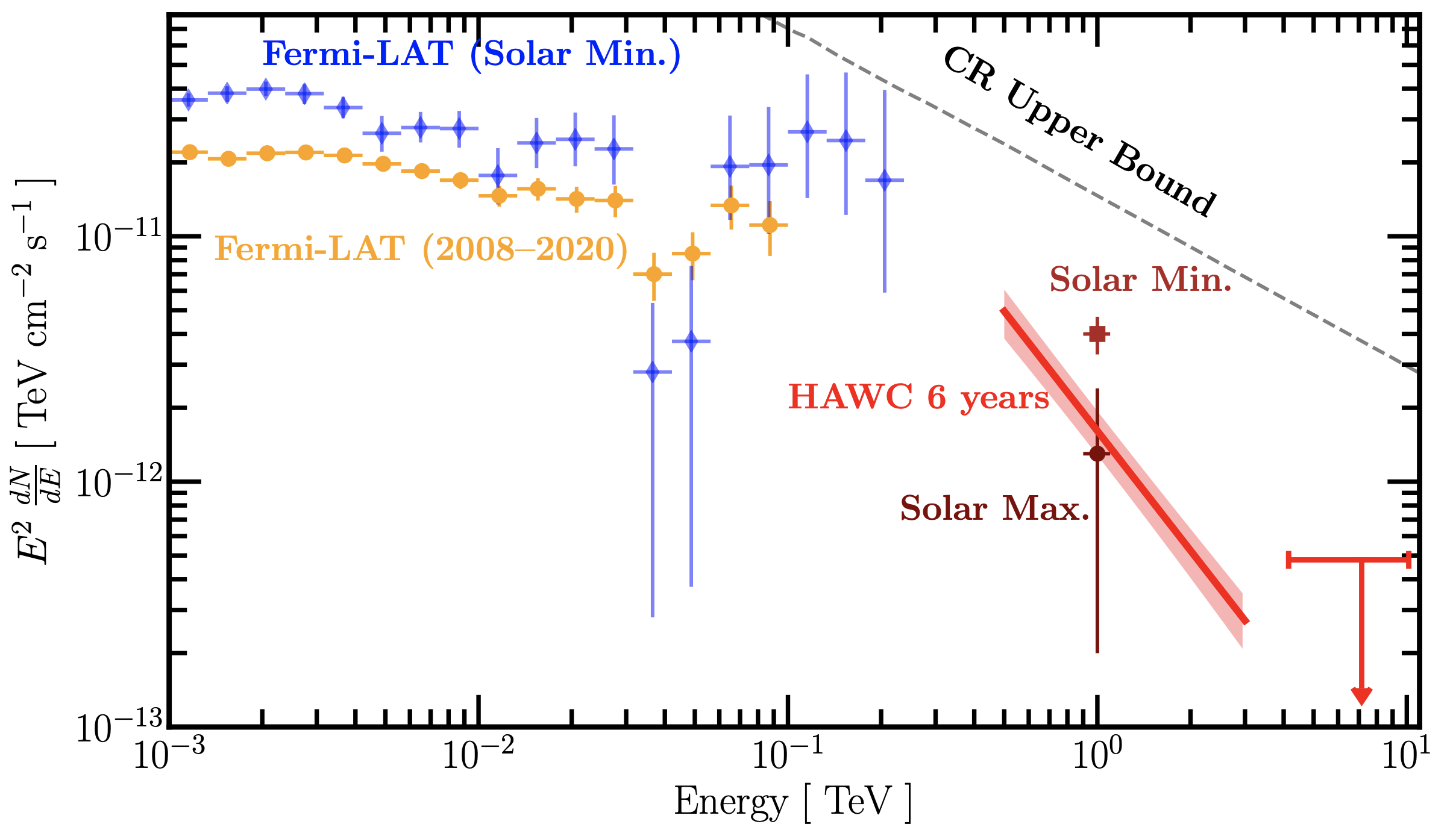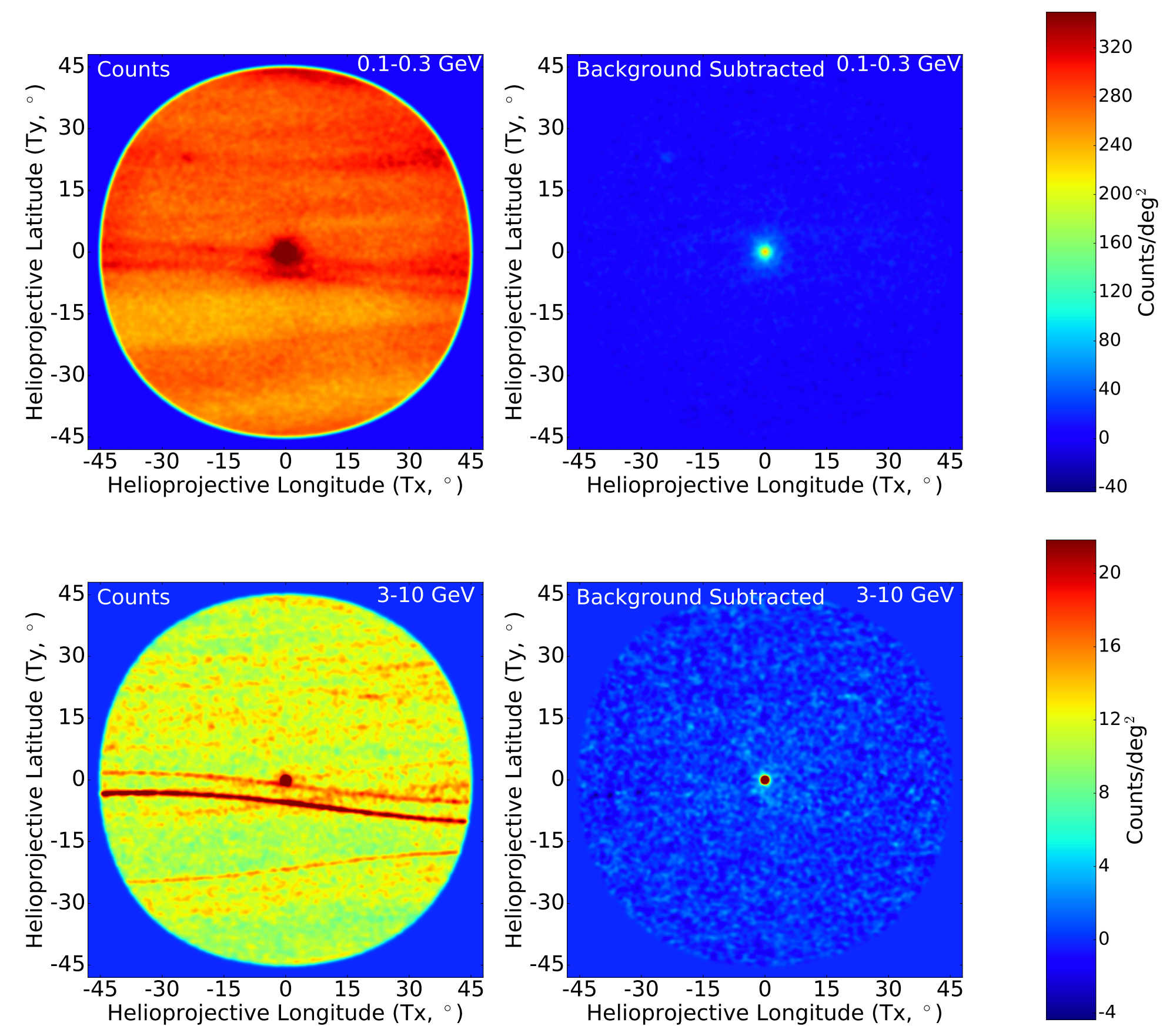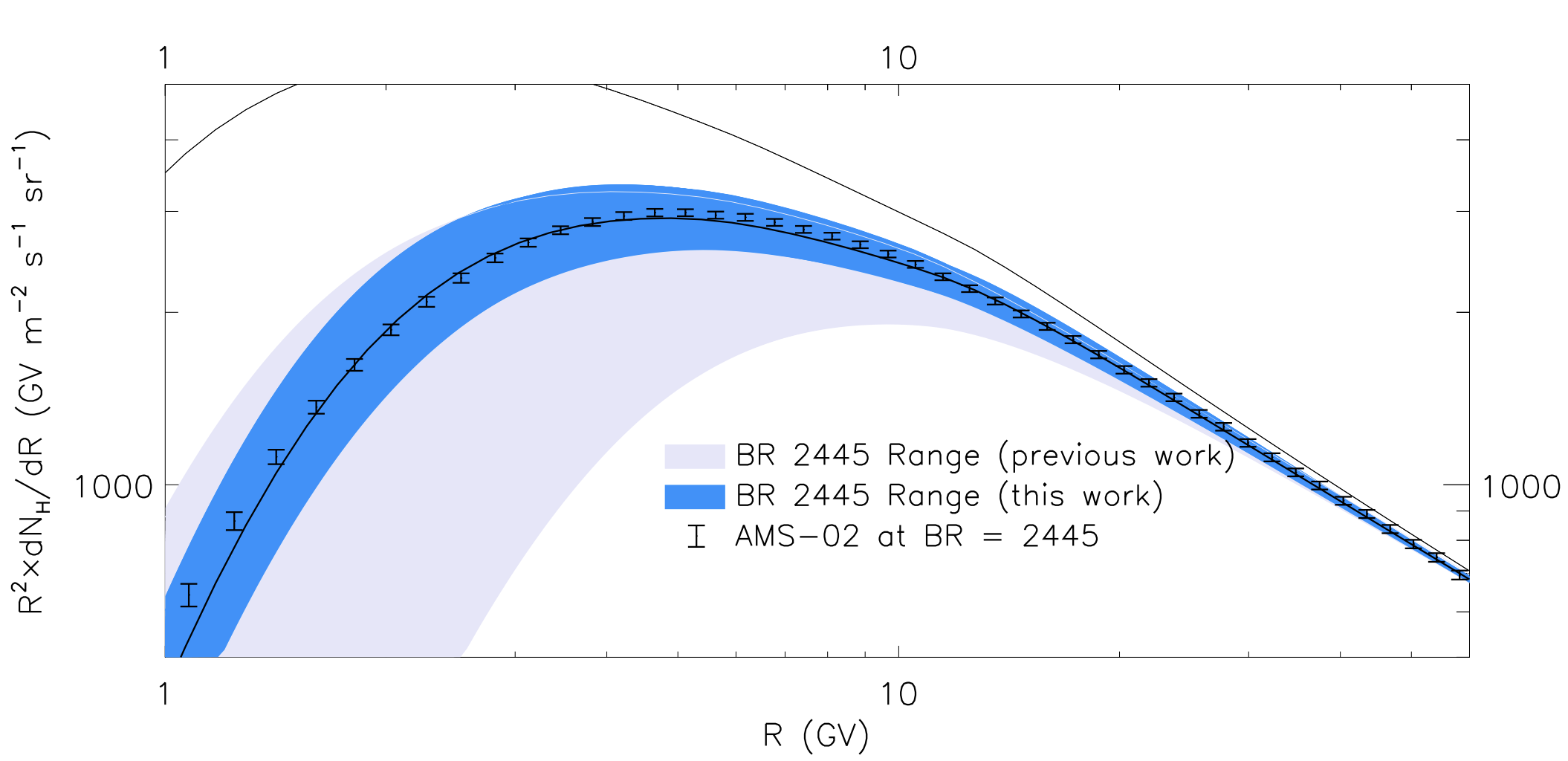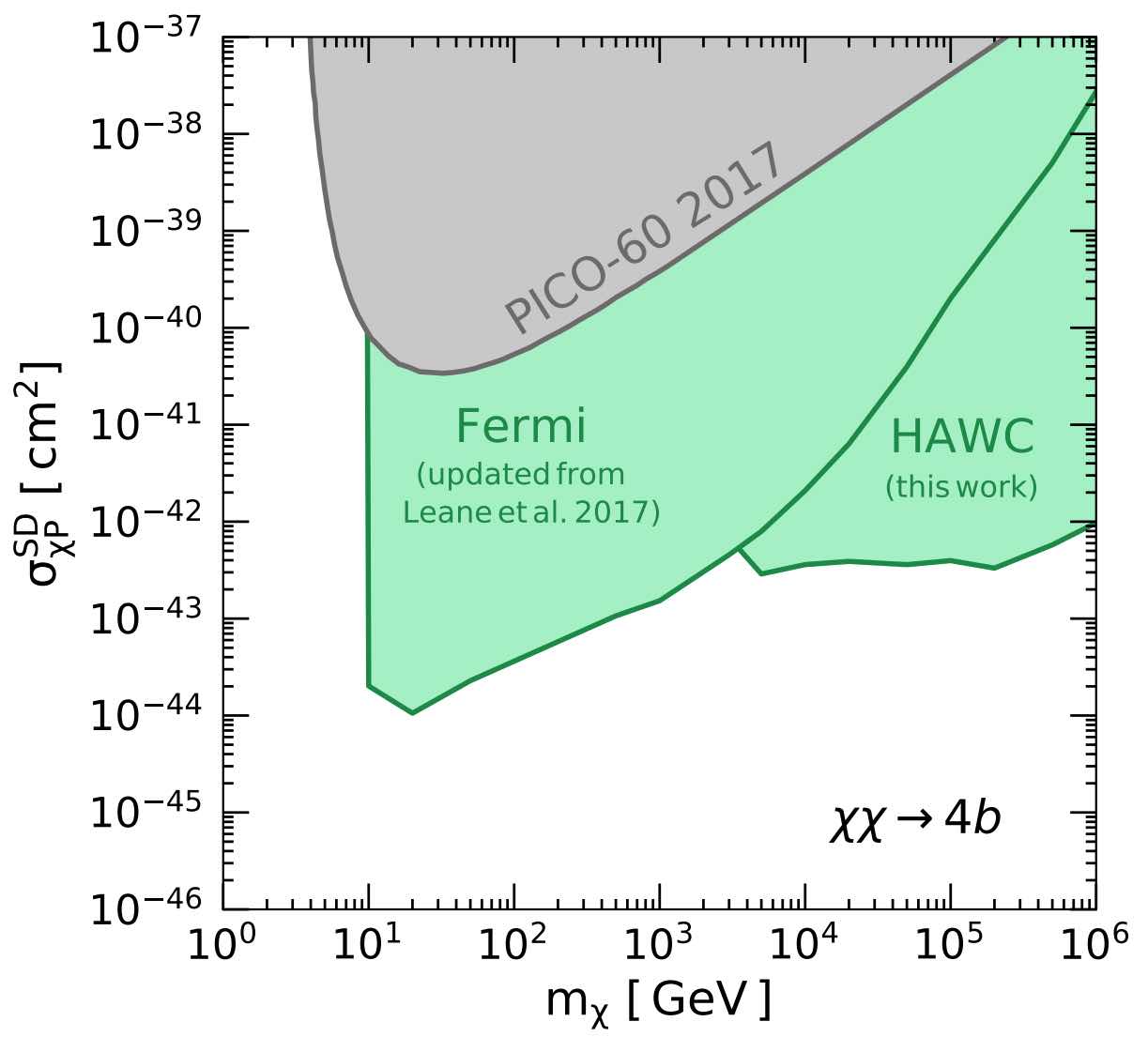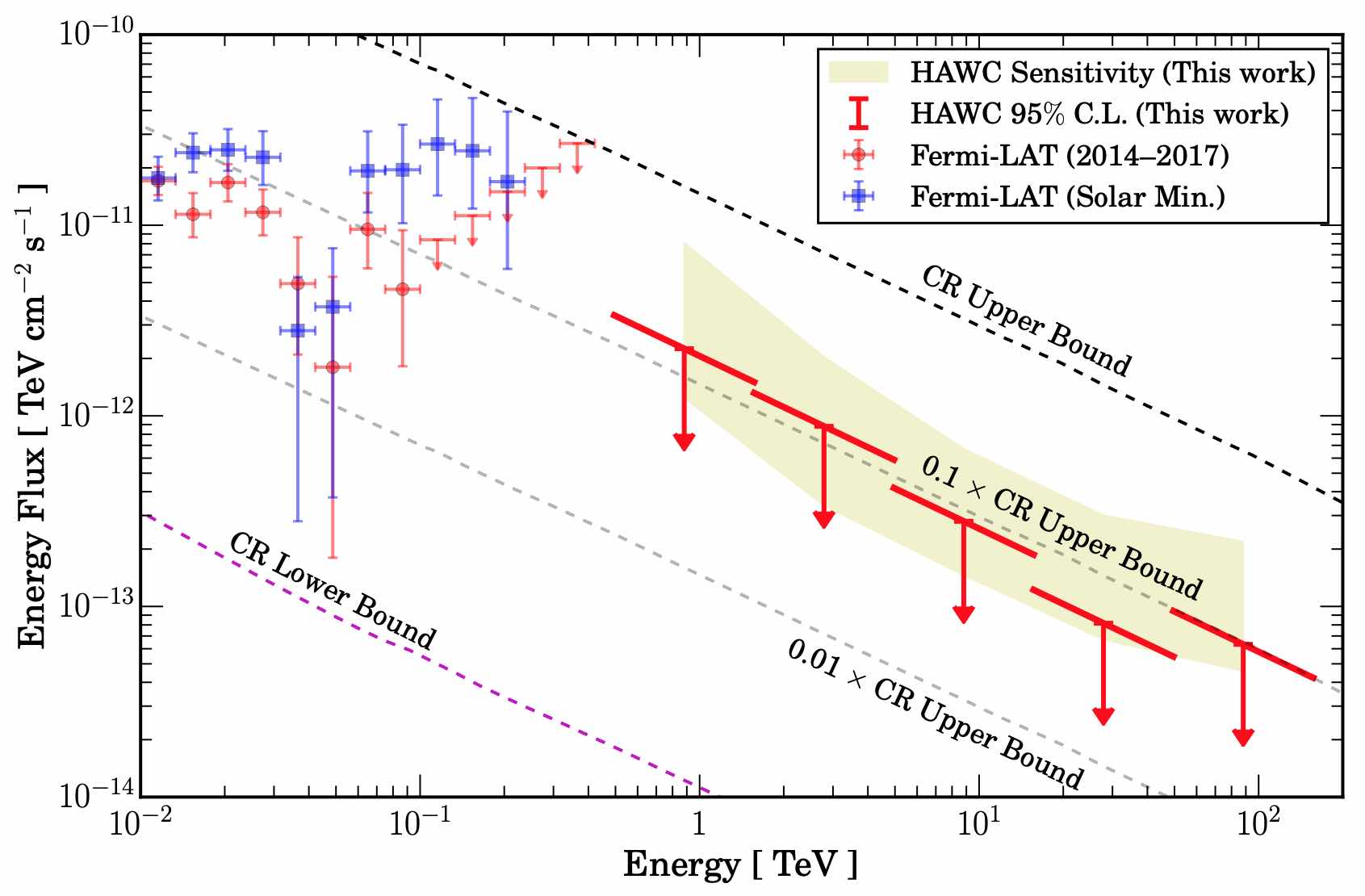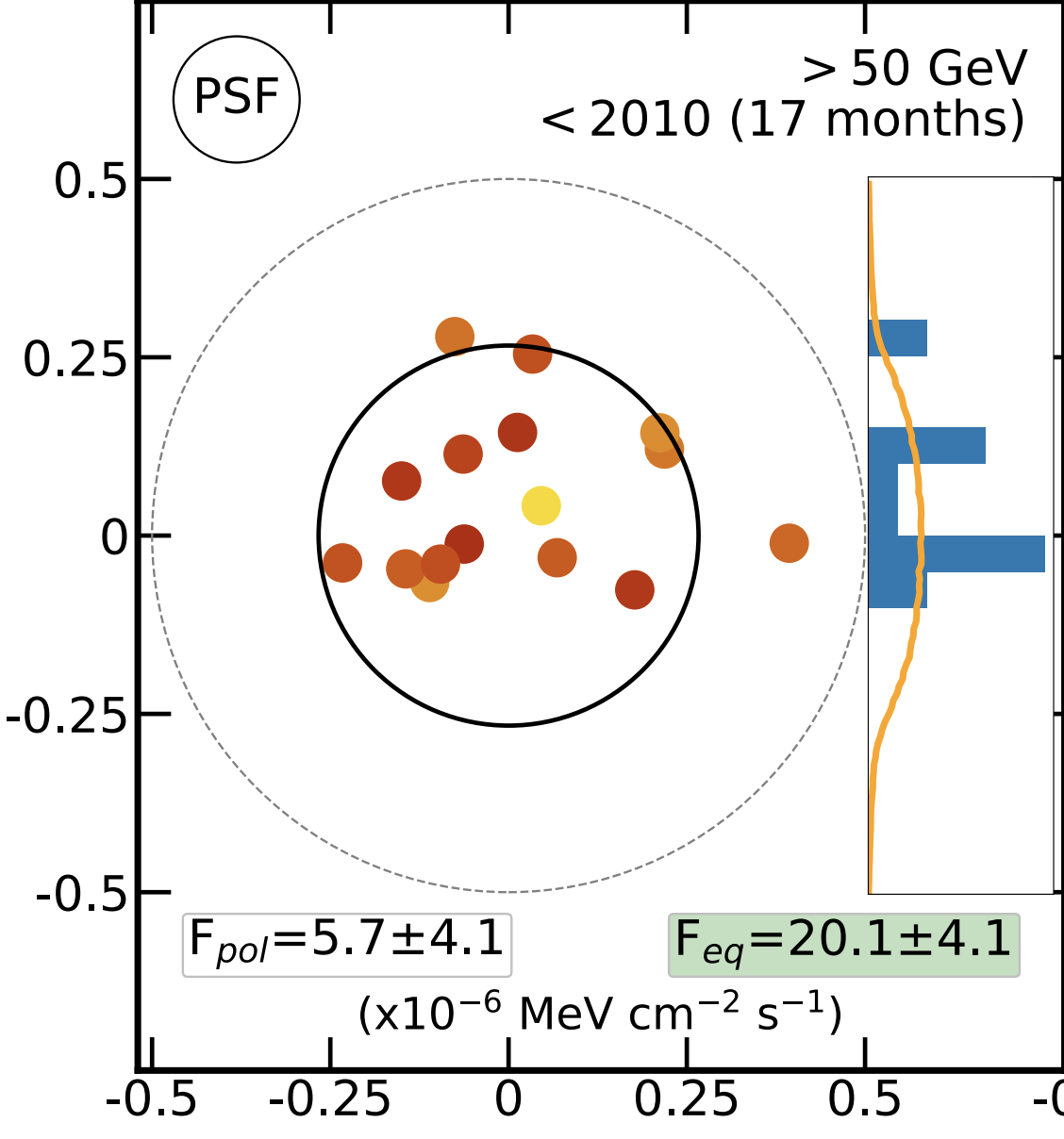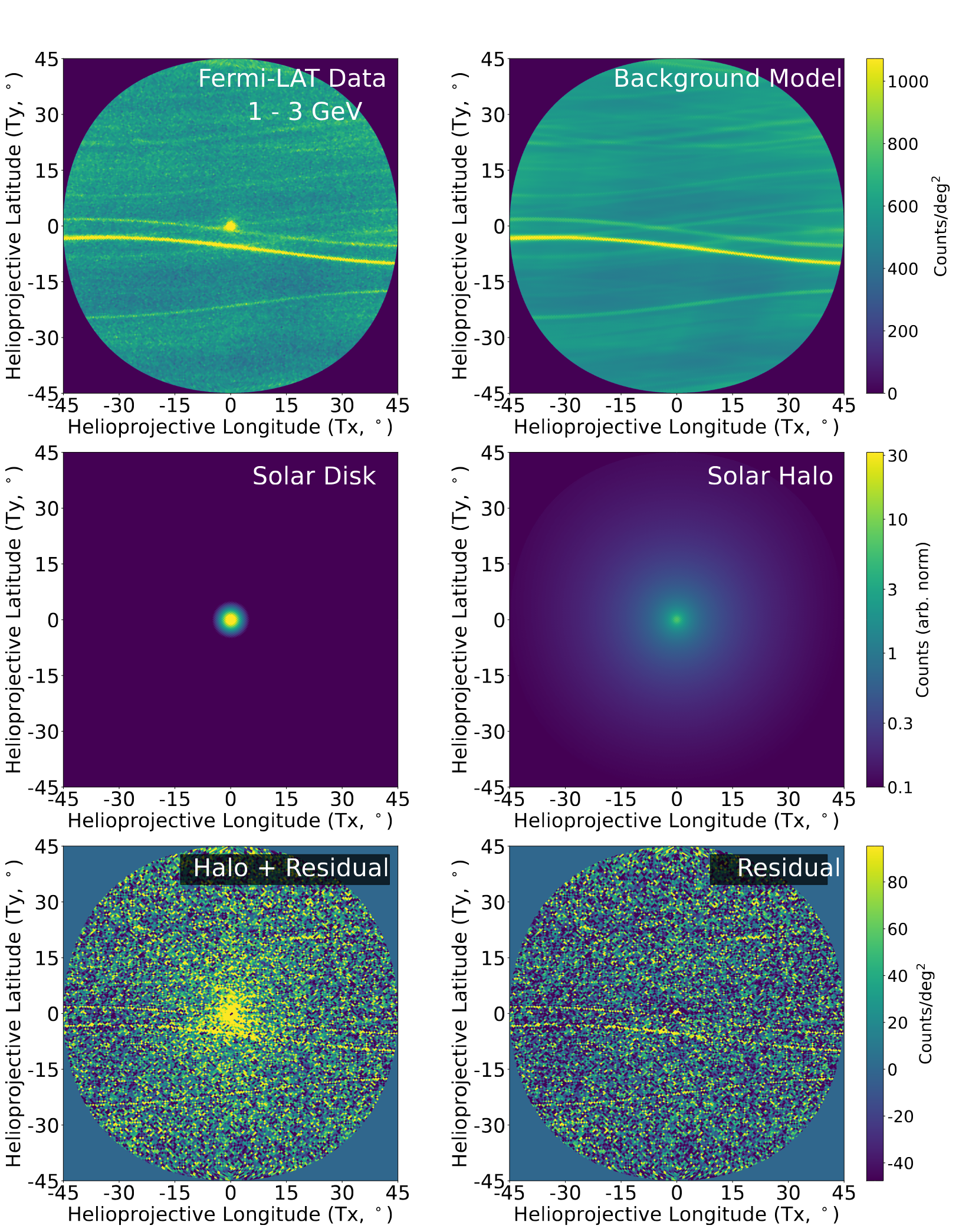
Gamma Rays in a Halo Around the Sun
The Sun is one of the brightest gamma-ray sources in the sky. The gamma-ray emission comes from two processes: First, high-energy cosmic-ray protons hit the solar surface and produce outgoing gamma-rays via hadronic interactions. Second, high-energy electrons and positrons upscatter starlight to gamma-ray energies via inverse-Compton scattering. This forms a bright, diffuse halo of gamma-ray emission around the Sun. We use 15 years of Fermi-LAT data to observe the spectrum, morphology, time-variation, and azimuthal distribution of gamma-rays from the solar halo, detecting bright emission between 31.6 MeV and 100 GeV, and out to 45 degress from the Sun. The morphology and spectrum of the emission is primarily governed by solar modulation, and we set strong constraints on the solar modulation potential in regions near the Sun that are inaccessible to local cosmic-ray probes of solar dynamics.
Read MoreResearch Topics
- Highlights and Overview
- Dark Matter(79)
- Galactic Center Excess(20)
- Celestial Body Searches(21)
- Gamma-Ray Searches(19)
- Multiwavelength(8)
- Cosmic-Rays Searches(12)
- Dark Matter Models(21)
- Axion Dark Matter(3)
- Astrophysics(77)
- TeV Halos(19)
- Gamma-Ray Astronomy(32)
- Cosmic-Ray Astronomy(14)
- Radio Astronomy(5)
- Neutrino Astronomy(6)
- Solar Physics(7)
- X-Ray Binaries(7)
